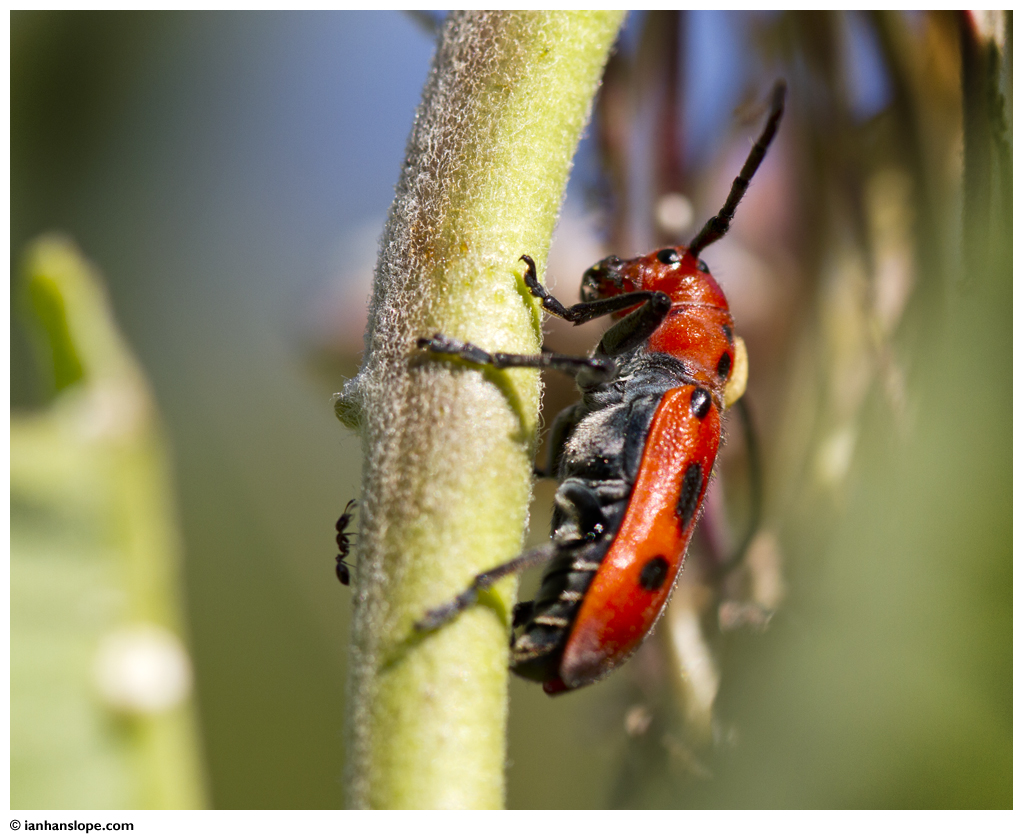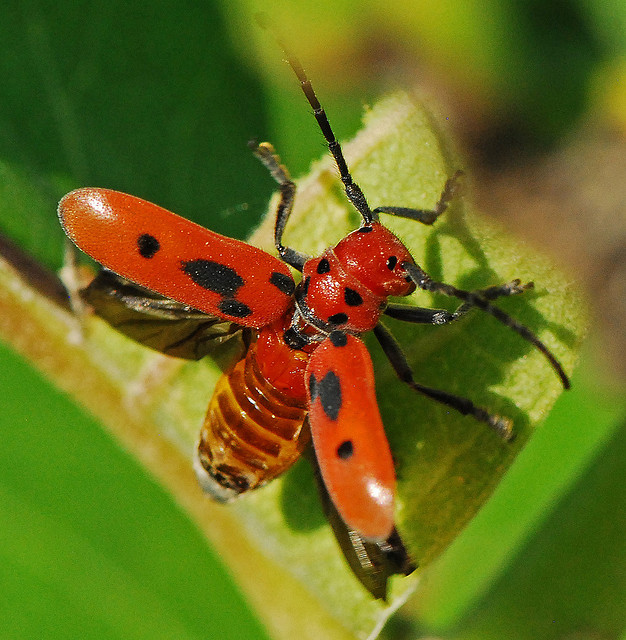Form and Function
The sap that comes from the milkweed plants that the beetle consumes
is considered toxic to nearly every other organism on the planet.
If the sap or beetle that has already been exposed to the sap are
consumed, the predator will throw up due to the cardiac glycosides
within the substance (My Monarch Guide, n.d.). Cardiac glycoside is a
sugar-based substance that disrupts the hearts functions by
attacking the heart muscles. These same glycosides are used in
certain areas of pharmacology. The glycoside is considered a
natural drug and used to increase the heart's contractions. This
in turn helps patients with congestive heart failure or atrial
fibrillation (Cardiac Glycosides, 2000). Visit
this page to learn more about cardiac glycosides and their
interaction within other plants!
The beetle has adapted in the way that when feeding, it opens up the milkweed plant’s vein in a way that decreases the exposure to the toxic latex, also known as sap. If the milkweed beetle were to get the sap on its mouth and doesn’t rub it off right away, the latex-like sap will actually glue the insects mouth shut (Bug of the Week, 2012). Most milkweed-eating organisms are able to utilize their proboscises to implant enzymes into the milkweed in order to make it easier to digest (Balpataky, 2004).
The Red Milkweed Beetle is recognized for being able to make a high pitched, shrill sound during many different situations. The shrill was observed when the beetles were being held by researchers, while exploring their surroundings such as the cage that they were being held in, while trapped inside a milkweed plant, fighting with another beetle, or when placed upside down. The milkweed beetle was also recognized to make a shrill or purring noise in two different situations, when being held in a closed hand, and when two beetles touch each others antennas. This could be proof of a survival or mating adaptation due to the fact that both the males and females are able to make this noise (Bug of the Week, 2012). An adaptation such as this is clear proof that organisms adapt to their environment in order to better their own survival. If they are able to make a loud shrill noise, it is likely that either a predator may be warned to release the beetle in turn using this as a defense mechanism, or the shrill could warn other beetles near to stay away due to the presence of predators.
 Studies have shown that the T. tetraophthalmus larvae are able to
attack the milkweed plant below ground while an above ground
caterpillar attacks simultaneously. With the two attacking at the
same time, they are able to alter the allocation of carbon and
nitrogen within the plants stems, in turn making the reward of
nutrients greater for both parties (Tao et al., 2013). This
example shows that this simple beetle takes part in an important
mutual relationship with the caterpillar and how they both can
benefit.
Studies have shown that the T. tetraophthalmus larvae are able to
attack the milkweed plant below ground while an above ground
caterpillar attacks simultaneously. With the two attacking at the
same time, they are able to alter the allocation of carbon and
nitrogen within the plants stems, in turn making the reward of
nutrients greater for both parties (Tao et al., 2013). This
example shows that this simple beetle takes part in an important
mutual relationship with the caterpillar and how they both can
benefit.
Please visit the Reproduction page next!